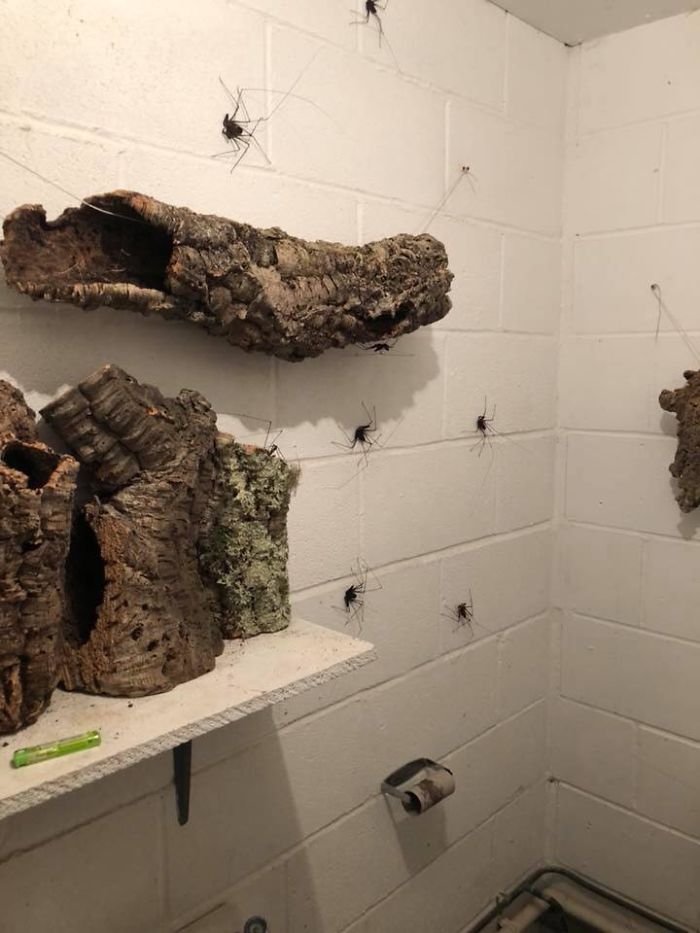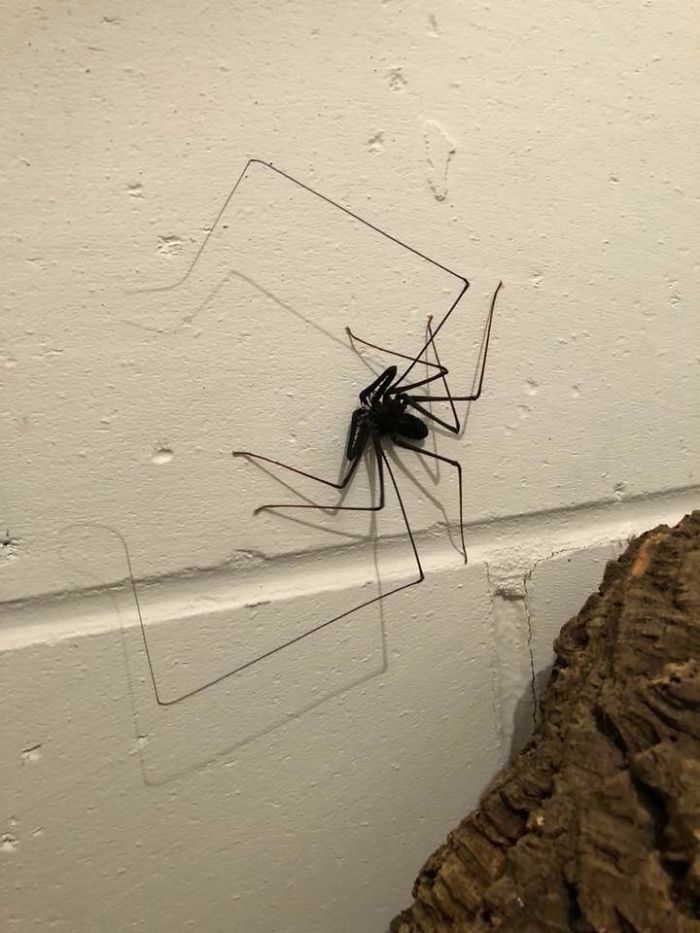People who are scared of spiders would definitely not like the architectural design of this bathroom.
Not only spiders but the pictures show tree logs for the spiders and it is very cringe-worthy.
Whip spiders can be seen crawling across the walls in the photos. The scientific name of these 150 species of whip spiders is Amblypygi. These creatures are related to spiders and scorpions but they don’t build webs and have long claws like their cousins.
“They look terrifying, but are actually delicate, timid and afraid of you,” said UCLA biologist Kenneth Chapin, a UCLA doctoral candidate in ecology and evolutionary biology in a report on the species.
Their total length is 5 to 70 cm ( 2.0 to 27.6 in) and they don’t even come in the list of top ten largest spiders in the world as their flattened abdomens are smaller. The things which they eat include crickets, cockroaches, grasshoppers, small lizards and hummingbirds and not only this but they can even eat the members of their own species.
Amblypygids which are known as whip spiders and tailless whip scorpions are harmless to humans.
According to Wikipedia, ‘’Amblypygids have raptorial pedipalps modified for grabbing and retaining prey, much like those of a mantis. The first pair of legs act as sensory organs and are not used for walking. The sensory legs are very thin and elongate, have numerous sensory receptors, and can extend several times the length of the body.’’
‘’Amblypygids have eight legs but use only six for walking, often in a crab-like, sideways fashion.
The front pair of legs are modified for use as antennae-like feelers, with many fine segments giving the appearance of a “whip”. When a suitable prey is located with the antenniform legs, the amblypygid seizes its victim with large spines on the grasping pedipalps, impaling and immobilizing the prey.
Pincer-like chelicerae then work to grind and chew the prey prior to ingestion.’’
Recommended Video!
“Spiders Are Raining Down From The Sky In Brazil”





